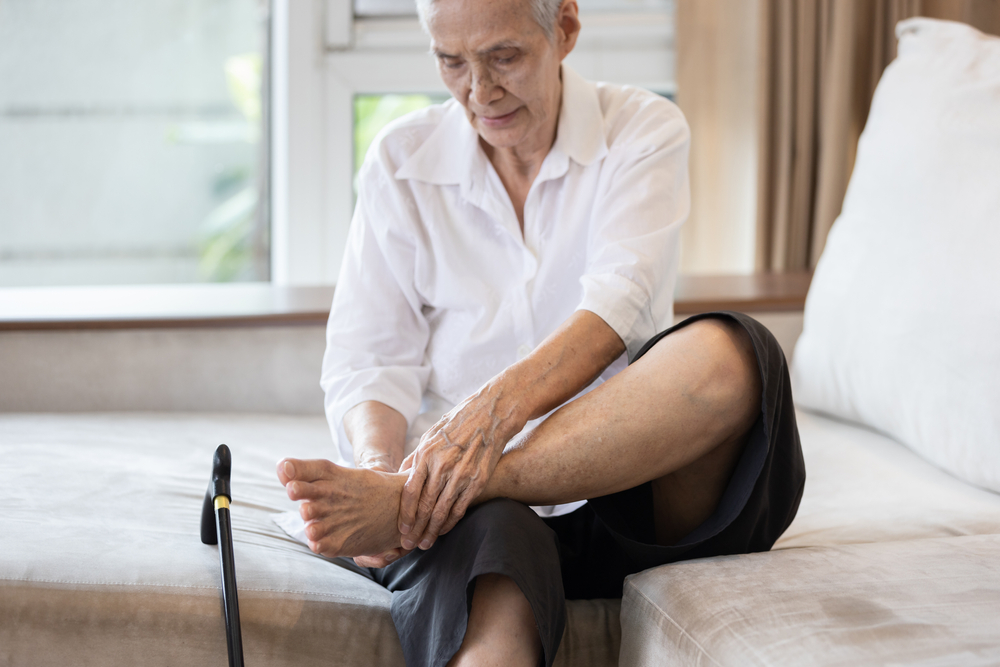Did you know that peripheral neuropathy is on the rise in the US, especially in older adults? It affects around 8% of the total older population, with 10.4% of adults aged 40 to 69 and 26.8% being 70 or older. Its main risk factor is diabetes; nearly half of individuals with diabetes develop neuropathy, and other significant portions (25 to 46%) have an unknown cause. Earlier diagnosis significantly lowers the risk of severe complications with effective treatment. Learn what causes peripheral neuropathy and how it’s diagnosed to manage this condition on time before it’s too late. Visit the best Pain Management Clinic in Brooklyn at Doral Health & Wellness or log on to www.doralhw.org. to schedule an appointment with us.
What is peripheral neuropathy?
The term “peripheral neuropathy” refers to a group of conditions that affect the cells and fibers of the peripheral nervous system and can be caused by various diseases. Diabetes and prolonged poor glucose control are both common risk factors that can lead to peripheral neuropathy. Peripheral neuropathy is a pathologic process that worsens over time. Sensory, autonomic, or motor neuropathy can develop in the lower extremities due to glycation-induced metabolic and vascular changes in nerve fibers. This neuropathy plays a devastating role in the chain of events that leads to ulceration. Patients frequently exhibit symptoms of small fiber and large fiber neuropathy.
Numbness and paresthesia are the symptoms of peripheral neuropathy that are most commonly experienced by patients. Along with these signs, there may also be pain, weakness, and a loss of deep tendon reflexes.
- Peripheral neuropathies typically develop over a period of months to years. However, some can develop more quickly than others and are progressive in nature.
- Affect not only motor and sensory but also autonomic fibers, so the severity of their clinical manifestations and associated symptoms can vary greatly.
The cranial nerves, the spinal nerve roots and ganglia, the nerve trunks and divisions, and the nerves of the autonomic nervous system are all included in this group of nerves.
One of the ways that peripheral neuropathies are classified is by categorizing them as either mono-neuropathies, multifocal neuropathies, or polyneuropathies. There are several different ways to classify peripheral neuropathies.
Additional sub-classifications can be made by separating peripheral neuropathies into axonal, demyelinating, or mixed. This is crucial for proper treatment and management.
The disease at the root of peripheral neuropathy plays a big role in figuring out how it happens and why.
- Peripheral neuropathies can be caused by a wide variety of distinct diseases. However, the mechanisms by which peripheral nerves are injured follow similar patterns. Even though peripheral neuropathies can be caused by a wide range of diseases, this is still the case.
- Segmental demyelination, Wallerian degeneration, and axonal degeneration are some of the reactions that can result.
Causes
Peripheral neuropathies can have many different causes, some of which are metabolic, others systemic, and still others are toxic. The following are some examples of underlying causes that should be considered.
Physical injury, such as pressure from a herniated disc, pressure from a cast, trauma, or arthritis.
- Diabetes
- Autoimmune diseases such as Rheumatoid Arthritis, Guillain-Barré Syndrome, Sjogren’s Syndrome, and Lupus (RA).
- Nutritional deficiencies (e.g., B1, B6, B12, vitamin E).
- Conditions that cause inflammation (e.g., vasculitis).
- Infections such as chicken pox, the varicella zoster virus (shingles), the White Nile virus, AIDS, Lyme disease (which is carried by ticks), the Epstein-Barr virus, and hepatitis C.
- Drugs used in chemotherapy
- Pharmaceuticals (antibiotics, cardiovascular medications)
- Diseases that run in families (e.g., Charcot-Marie-Tooth disease, familial amyloidosis)
- Multiple myeloma
- Tumors
- Trauma and other injuries
- A monoclonal gammopathy with an unknown clinical significance (MGUS).
It’s possible that there is no obvious direct cause in some situations.
- The clinical manifestation of peripheral neuropathy can look very different from one patient to another because it is caused by a different underlying disease.
- As the disease got worse, patients may say that their symptoms started in their toes or fingers but quickly spread to their arms or legs.
- Changes in sensation, weakness, atrophy, pain, numbness, and even autonomic disturbances are all possible symptoms.
- Clinically, these symptoms may be similar to those of myelopathies, radiculopathies, autoimmune diseases, and diseases of the muscles.
Diagnostic Procedures
When evaluating patients who have neuropathy, it is necessary to conduct a comprehensive history and physical examination, including an examination of both the patient’s current and previous medications. The following studies may help diagnose and narrow down the underlying cause of neuropathy. Although there are no standard laboratory or imaging studies to test for peripheral neuropathies, these studies may help in the diagnosis and help narrow down the underlying cause of the neuropathy (e.g., inflammatory, infectious, metabolic).
- Blood tests to screen for conditions such as diabetes, vitamin deficiencies, and toxins.
- An imaging exam, such as a CT scan or an MRI scan,
- Evaluation of nerve function, including measurement of nerve conduction.
- A biopsy of the nerve looks for any abnormalities.
Early diagnosis allows healthcare providers to create treatment plans based on the underlying cause. The treatment involves medications, surgery, physical therapy, assistive devices, foot care, and other pain treatments.
Early signs of peripheral neuropathy are a warning that you should seek treatment to manage them for a better life. Don’t take it for granted. If you’re ready to take the next step in managing your pain, we recommend consulting with our healthcare provider to explore the right treatments or therapies for you. Always listen to your body and adjust your daily routine to prioritize your well-being. Visit Doral Health & Wellness Pain Relief Department in Brooklyn, to get professional help and guidance on how to manage your problem. Call us on + 1-718-367-2555 to get a consultation. If you need help learning coping methods, register your information and make direct contact with our doctors at https://yuz88hfiyh7.typeform.com/Doralintake. Log on to www.doralhw.org. Or visit us at 1797 Pitkin Avenue, Brooklyn, NY 11212.






